By: Sydnee Richmond
Hello everyone! I hope you are doing well, staying positive, and staying healthy! For this activity, you can discuss with your family some fun facts about our beloved friends at Nia House. They miss you all and cannot wait for you to be back! If you have any questions, comments, or even corrections please feel free to contact me! I hope you all enjoy learning more about our Nia House Animals!
Name: Passion Fruit
Breed of Chicken: Lohmann Brown Chicken
Passion Fruit is one of our larger, red-brown chickens we have here at Nia House. Passion Fruit is considered a “teenager.” She loves to walk around on the grass as well as hang out in the chicken coop.
Name: Zebra
Breed of Chicken: Plymouth Rock Chicken
Zebra is also one of our larger chickens at Nia House and, you guessed it, looks like a zebra! She is black and white and has a beautiful textured print to her feathers. You can find her in the grass with Passion Fruit or in the chicken coop.
Name: Bone
Breed of Chicken: Buff Orpington
Bone is one of the two smaller chickens at Nia House and she is the best flyer and jumper of the four. She has smooth feathers and is yellow, orange, and white in color. Bone loves to walk around in the garden behind the sand box and loves to dig in the dirt!
Name: Honey Fluff
Breed of Chicken: Half Silky
Honey Fluff is the most distinct chicken of the four, as she is very fluffy and has some rough-looking feathers. She is the shortest of the four and you can usually find her rolling in the dirt in one of the planters. Honey Fluff and Bone are very good friends.
Name: Angel Fish
Type of Fish: Angelfish
Angel is a solo fish in her tank and is a larger, white fish. She has two grey stripes and has very large eyes! Angelfish are very smart in nature and actually recognize their owners. She loves to swim past the children as they wave to her in Alexis’s class.
Name: Too many to name!
Type of Fish: Platy Fish
These fish live in Amanda’s classroom and there are a lot of them! These little fish are yellow, black, orange, and white in color. They originate from Central America and the male fish are smaller and brighter in color than the female fish.
Name: Freya and Bay
Type of Bunny: Holland Lop
Freya and Bay used to not get along very well, but have adapted very nicely to being coopmates. They live in their coop behind the playhouse and have lots of hay to comfort them. They eat many greens, such as carrot tops and lettuce, and the children love to come around and “feed” them hay they find in the yard. Freya is our white lop ear and Bay is our brown lop ear. These two are very soft and are in the preschool yard.
Holland Lops are often highly active, are energetic and playful, and love cat toys, which keep them entertained and happy.
Holland Lops originate in the Netherlands and can live to be 10 years old.
For more information on Holland Lop rabbit behavior, click here.
Name: Hamburger
Breed of Tortoise: Russian Tortoise
Hamburger is our tortoise that lives in his terrarium in Ayako’s classroom. He eats lots of leafy greens and loves to nuzzle in the dirt. The light in his terrarium is called a UVB light and, just like all reptiles, Hamburger needs it to produce Vitamin D3, calcium, and other nutrients.
The popular Russian tortoise is a small tortoise native to many different countries—not just Russia, but also Uzbekistan, Afghanistan, Iran, China, Kazakhstan, Pakistan and others. It prefers a generally dry climate with seasonal variations in temperature from hot to quite cold, well below freezing.
It is thought that in the wild, Russian tortoises’ activity levels are at their peak for only about three months of the year. They will sometimes spend more than six months hibernating through cold temperatures, and during the peak of the hot season they will dig in and aestivate, often without moving for weeks at a time in order to avoid the extreme heat at the surface. They are most active, therefore, early in the spring, when reproductive efforts take place, followed by a period in the fall when they spend time fattening themselves up prior to the long winter ahead.










